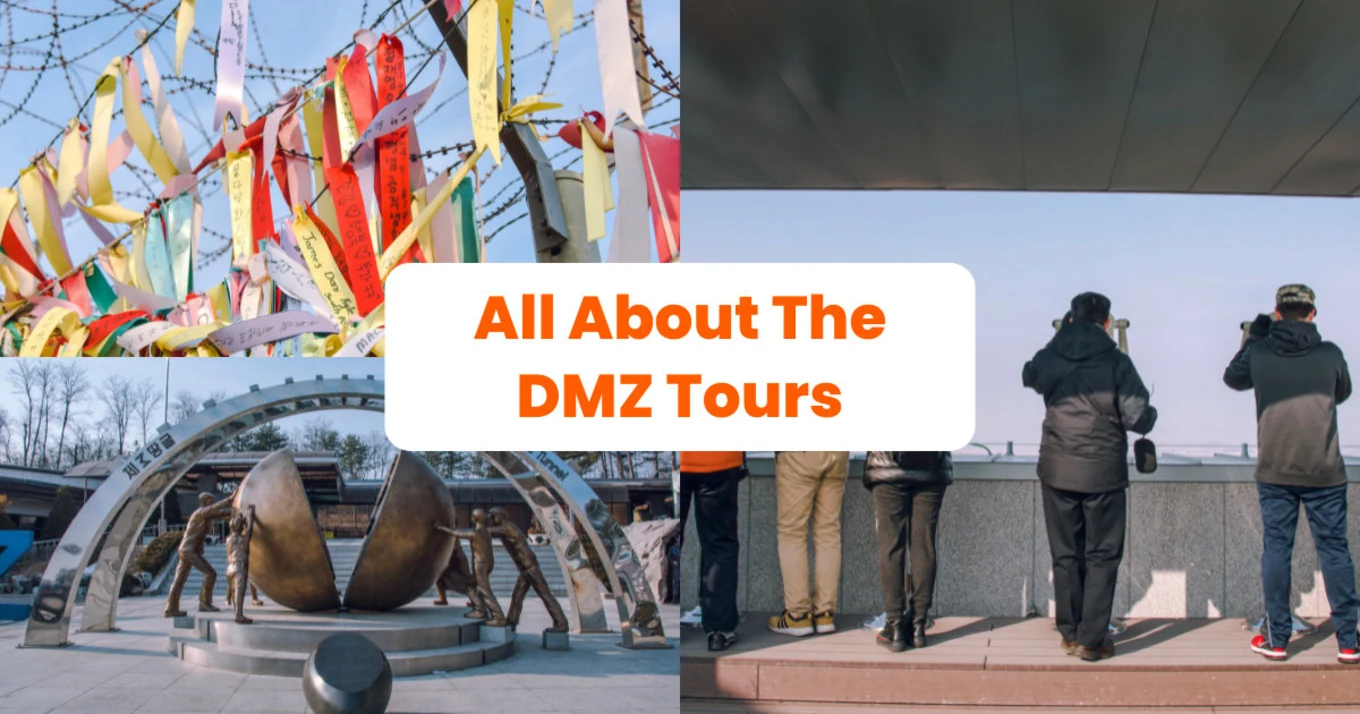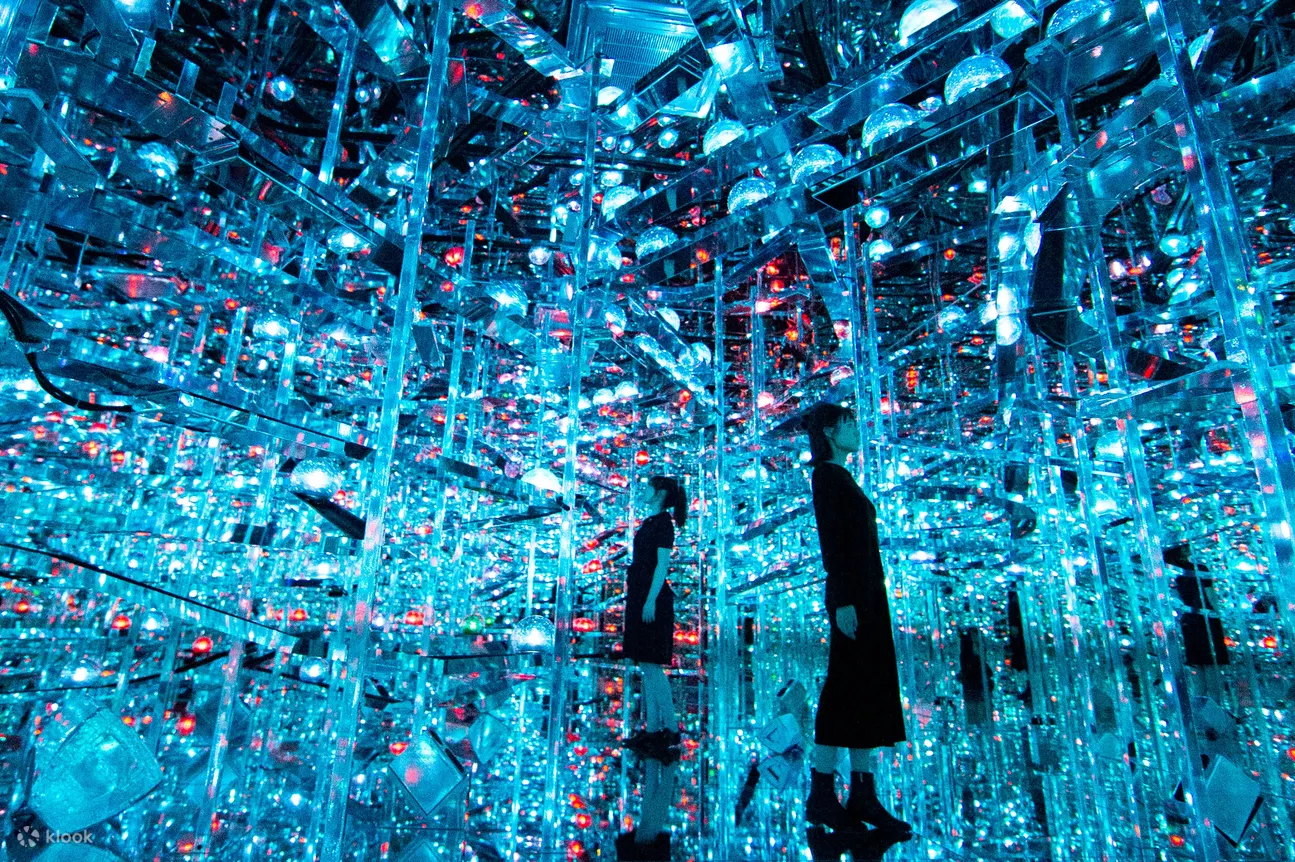There’s a way to see North Korea without leaving the South. The DMZ, or demilitarized zone, is open for travelers to peek into North Korea. There are several tours available for you not just to see what North Korea is like but also to dive deep into the history of the division, as well as a walkthrough of all the attractions that can be found within the DMZ.
Attracting millions of tourists every year, the DMZ is one of the most heavily militarized regions on the planet. It also offers incredible insight into North Korea and Korean War history.
What is the DMZ in Korea?
DMZ stands for Demilitarized Zone. Established in 1953 at the cease-fire of the Korean War, the DMZ Korea represents the area 2 km north and south of the Military Demarcation Line.
In the DMZ, access is limited to keep visitors safe and sound. And because it’s uninhabited by people, this area preserves valuable ecology and historical attractions. No wonder it’s one of the most unusual tours in Korea.
Main differences between the DMZ and JSA
Before getting into the attractions, it’s essential to understand one distinction. Some people use the words DMZ and JSA interchangeably, but they mean different things. JSA stands for Joint Security Area and is commonly known as Panmunjom, which sits at the western portion of DMZ.
Because the truce was officially signed at JSA, it’s the only area outside the district boundaries of North and South Korea.
Today, Panmunjom remains a place of dialogue between the two countries. When the term DMZ is used in the context of booking tours, it usually refers to the DMZ tour exclusively. The same goes for the JSA tour, unless the name specifically states it includes DMZ and JSA tour.
Can people cross the DMZ from South Korea to North Korea?
Unless you have access granted by North Korea or the United Nations command, then no, you cannot. Attempting to do this might probably lead you to some trouble with the authorities guarding this border.
What to do in and around the DMZ
The DMZ offers rich, historical sightseeing and an opportunity to learn more about the Korean War. Imjingak Park, Third Tunnel, Freedom House, and Bridge of No Return are some of the most popular spots.
Imjingak Park
With sentimental and symbolic meaning, the Imjingak Park commemorates families who are separated by the division of North and South. With over 400 exhibits about North Korea, the park signifies the hope that one day, unification will become a reality. And during holidays, families originally from North Korea, come to the park’s Mangbaedan Alter to carry out rituals.
The Third Tunnel
Go underground in one of the four tunnels underneath the DMZ. Found in 1978, the Third Tunnel, otherwise known as the Third Tunnel of Aggression, connects North and South Korea. This dugout marvel transported 30,000 soldiers through the tunnel in an hour, providing an invasive route into the South. It’s a poignant depiction of the conflict.
Freedom House
In JSA, the Freedom House is a meeting place for North and South Korea. It’s a site where the two sides negotiate and communicate, and holds the offices of major organizations like the South and North Red Cross Liaison Office.
Bridge of No Return
Here at the Bridge of No Return, the reality of war is strikingly apparent. A site for many Prisoner of War (POW) exchanges, this bridge is named as such because once a POW crossed this bridge, from South Korea to North Korea, there was no turning back. This bridge has sealed many fates.
How long is the DMZ tour?
It will depend on the tour that you choose. Some tours will only take about five hours of your day, but the more in-depth ones can take an entire day, like nine hours. So, if you want to visit the DMZ tour but not spend an entire day there, then definitely choose half-day tours. But, if you plan to give one day from your entire trip just for the DMZ, then you can opt for full-day tours that will allow you to explore everything there is to see in the DMZ.
Choose your DMZ tour below:
What are the DMZ Tour requirements?
To cut to the chase, the requirements for the JSA tour are more rigorous than for the DMZ tour in Seoul. You’ll only need your passport info to book the DMZ tour. However, for the JSA tour, if you’re visiting from restricted countries, you’ll need to send a colored photocopy of the photo page of your passport. No matter which tour you opt for, bring your passport on the day.
These restricted countries include Afghanistan, Algeria, Azerbaijan, Bahrain, Bangladesh, Belarus, Bolivia, Bosnia, Burma, China, Cuba, Egypt, Estonia, Georgia, Hong Kong, India, Indonesia, Iran, Iraq, Jordan, Kazakhstan, Kuwait, Kyrgyzstan, Latvia, Lebanon, Libya, Lithuania, Macau, Malaysia, Moldova, Morocco, Nigeria, North Korea, Oman, Pakistan, Palestinian Authority, Qatar, Russia, Saudi Arabia, Singapore, Somalia, Sudan, Syria, Taiwan, Tajikistan, Tunisia, Turkmenistan, Ukraine, United Arab Emirates, Uzbekistan, Venezuela, Vietnam, and Yemen.
Can you bring kids to the DMZ?
To take part in the JSA tour, you need to be 11 years or older. The tour isn’t a good fit for younger kids as they’ll need to be mature enough not to touch the equipment in the meeting places. If you’ve got younger tots, opt for the DMZ tour which welcomes all ages.
Dress code for the DMZ tour
On the DMZ tour, you can wear what you like. But the JSA tour has a dress code; basically, no casual clothing. Dress for the JSA as though you’re meeting your in-laws for the first time: dress to impress. That means no ripped jeans, revealing clothes, open-toed shoes, messy hair or military-style outfits.
Are you allowed to take photos in the DMZ?
We’re all accustomed to taking photos left, right and center; it’s so innate, you probably don’t think about it. However, you’ll need to reign-in your snap-happiness on the JSA tour: no camera lens should extend to over-90mm zoom. Listen to your tour guide about where you can and can’t take photos.
How to get to the DMZ and JSA
The only attraction open to the public without prior reservation is Imjingak Park. You must apply for a visa in advance to enter the Third Tunnel and JSA. It’s also worth noting that JSA only accepts group tours, not individual travelers, so book your tour early!
Many tours hire local Korean tour guides, so if you’re not a native speaker, make sure you reserve a tour with an English-speaking guide. For most tours, hotel pickup is available.
To reach Imjingak Park — take the train or bus. By train, make your way to Musan Station on the Gyeongui Line. Then find the tour train that heads towards Dorasan Mountain and get off at Imjingang River station. By bus, board the red bus 9710, which starts at Seoul Station or Gwanghwamun Station.
If you want a more hassle-free experience, you can also rent a car and drive up to Imjingak to get to the DMZ.
How long is the drive from Seoul to the DMZ?
It typically takes around 1 hour to 1 hour and 30 minutes, depending on where you're coming from in Seoul and how traffic it may be on that day.
Is it worth it to go to the DMZ?
Yes! This can definitely be an enriching experience for people who may be visiting South Korea for the first time or even if you're a seasoned traveler. DMZ tours can help you understand the history of both countries as well as the unification efforts that have been made over the years.
🇰🇷South Korea Essentials🇰🇷
🚄Trains & Airport Transfers
🚇Transportation & Prepaid Cards

































